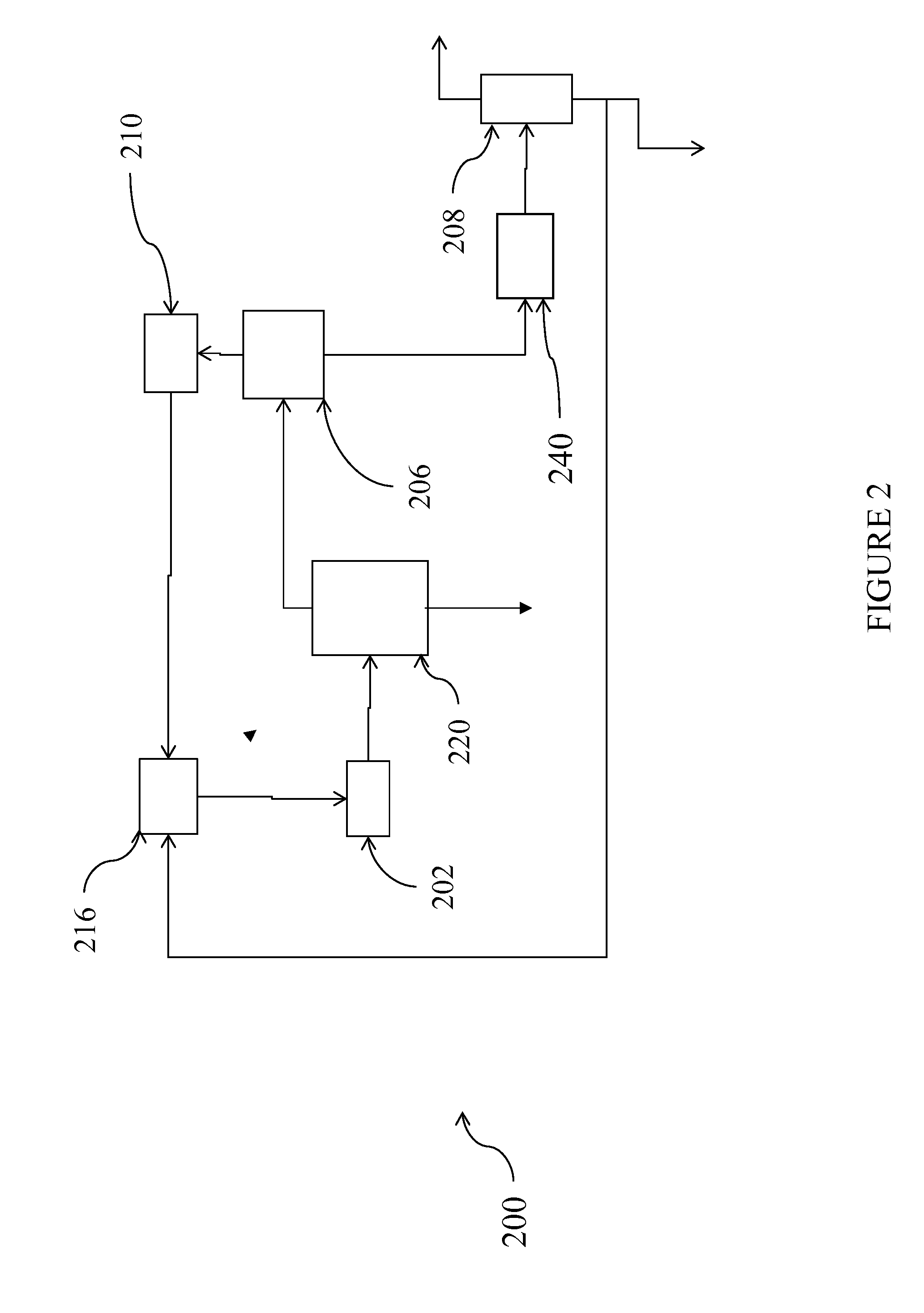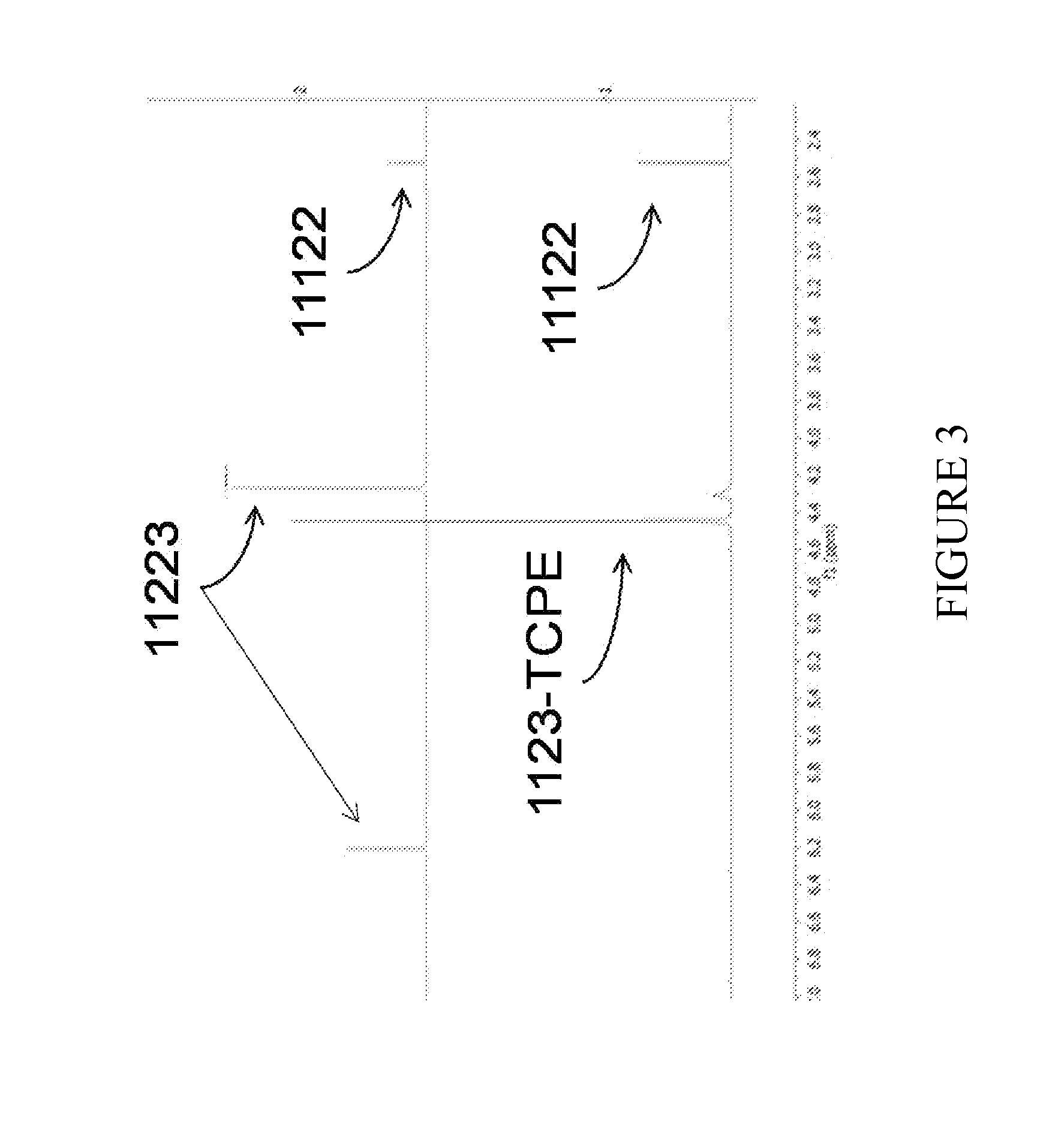Process for the production of chlorinated propenes
- Summary
- Abstract
- Description
- Claims
- Application Information
AI Technical Summary
Benefits of technology
Problems solved by technology
Method used
Image
Examples
example 1
[0067]A neat mixture of 1,1,1,2,2-pentachloropropane and 1,1,2,2,3-pentachloropropane is caustic cracked using 5N NaOH and a catalytic amount of the phase transfer catalyst tetrabutylammonium chloride at 50° C. The mixture is stirred vigorously at this temperature for an hour and sampled. Stirring is continued overnight at the same conditions.
[0068]After 1 hour, all of the 1,1,2,2,3-pentachloropropane is converted to 1,1,2,3-tetrachloropropene while essentially none of the 1,1,1,2,2-pentachloropropane had been consumed. After overnight stirring, a large amount of the 1,1,1,2,2-pentachloropropane remains unconsumed as shown by the NMR spectrum in FIG. 3.
example 2
[0069]A solution of 1,1,1,2,2-pentachlorpropane in carbon tetrachloride is dehydrochlorinated using AlCl3 as the catalyst. At 80° C., 1,1,1,2,2-pentachloropropane is to TCPE as shown in the product (top) NMR spectrum provided at FIG. 4. The starting material spectrum is the bottom spectrum in FIG. 4. While the anticipated product of this reaction is 2,3,3,3-TCPE, it is believed that 2,3,3,3-TCPE rearranges under these conditions to provide 1,1,2,3-TCPE as the predominant product. Taken together, Examples 1 and 2 show that, while 1,1,1,2,2 does not dehydrochlorinate in response to caustic cracking conditions, 1,1,1,2,2-pentachloropropane not only cracks when contacted with the Lewis acid catalyst aluminum chloride, but also surprisingly provides the desired TCPE isomer, 1,1,2,3 almost exclusively.
example 3
[0070]The dehydrochlorination of 1,1,1,2,2-pentachloropropane is attempted using FeCl3 as a catalyst, with all other conditions being identical to those of Example 2, i.e., carbon tetrachloride is utilized as a solvent and the reaction is carried out at 80 C. 1,1,1,2,2-pentachloropropane is unreactive at these conditions, undergoing essentially no (<5% conversion) to either 2,3,3,3-TCPE or 1,1,2,3-TCPE. Taken in combination with Example 2, this Example shows that while ferric chloride is completely ineffective at catalytically cracking 1,1,1,2,2-pentachloropropane, aluminum chloride is not only effective, but the conditions at which it may be used surprisingly result in the provision of 1,1,2,3-TCPE almost exclusively.
PUM
| Property | Measurement | Unit |
|---|---|---|
| Concentration | aaaaa | aaaaa |
Abstract
Description
Claims
Application Information
 Login to View More
Login to View More - R&D
- Intellectual Property
- Life Sciences
- Materials
- Tech Scout
- Unparalleled Data Quality
- Higher Quality Content
- 60% Fewer Hallucinations
Browse by: Latest US Patents, China's latest patents, Technical Efficacy Thesaurus, Application Domain, Technology Topic, Popular Technical Reports.
© 2025 PatSnap. All rights reserved.Legal|Privacy policy|Modern Slavery Act Transparency Statement|Sitemap|About US| Contact US: help@patsnap.com



